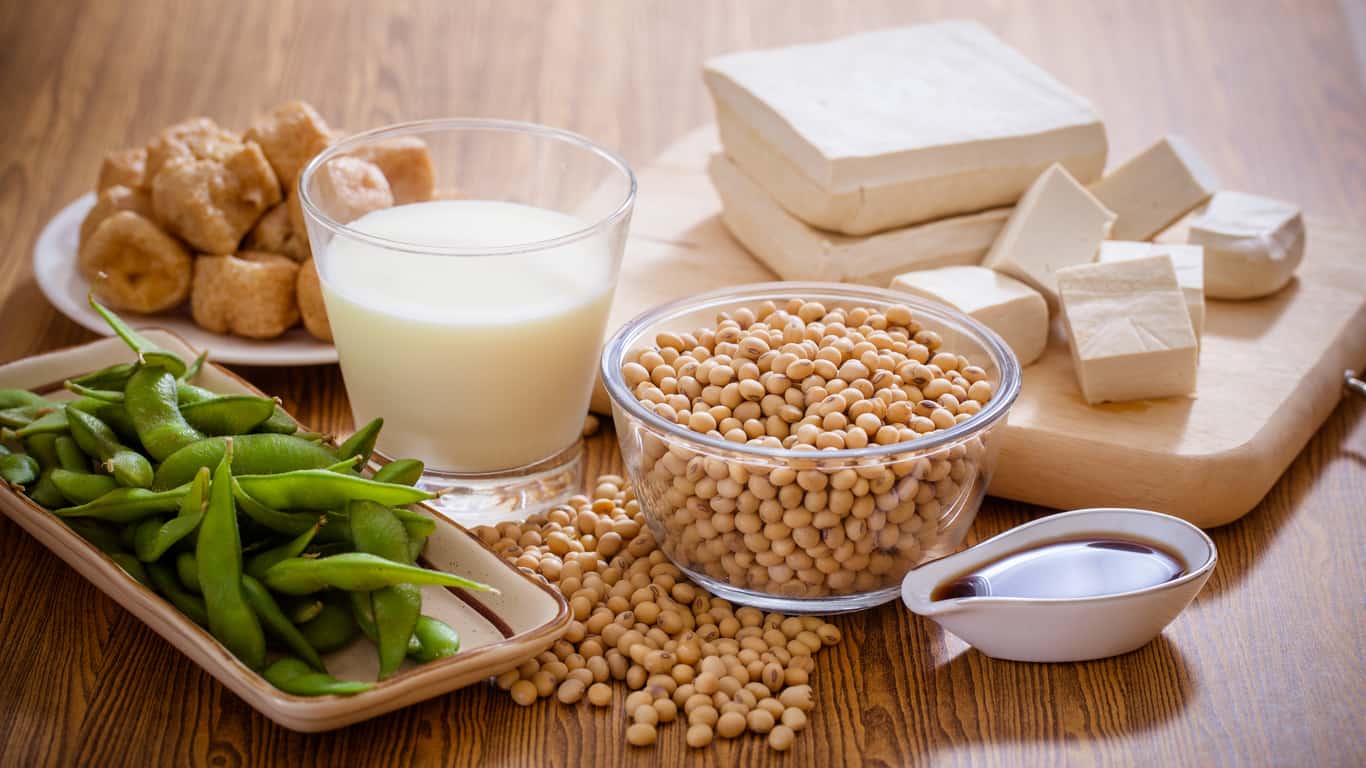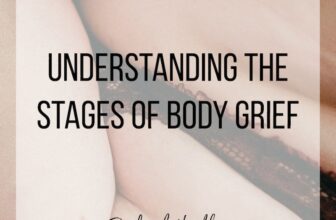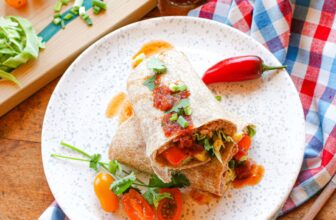
[ad_1]
Soy is one of the most polarizing foods out there when it comes to nutrition. As a dietitian, I hear a ton of claims about soy (good and bad).
Supporters praise the health benefits of soy, including being a good source of plant-based protein and improving heart health. People warning us about health risks of soy claim it may negatively impact fertility, cause breast cancer, leads to “man boobs” and inhibits the absorption of minerals.
Let’s see what the real story is around soy and health.
Soy nutrition:
Soybeans are a good source of protein, with around 30g per cup. They are also high in fibre and contain other vitamins and minerals such as potassium, zinc, calcium, iron, and B vitamins.
Soy has been consumed in Asian cuisine for more than 2000 years. There are two main categories of soy foods: fermented and unfermented. Fermented soy foods include natto, tempeh, soy sauce, and miso. Unfermented soy foods include soy milk, tofu, and edamame. Most soy consumed globally is in the unfermented form.
Soy protein can also be consumed in supplement form, with soy protein concentrate and soy protein isolate being the most common. More about that in a minute!
When it comes to plant-based proteins, soy is a good option because it is a complete protein, meaning it contains all nine essential amino acids. Twenty amino acids in total are needed to make protein. Nine are considered essential, meaning we have to get them from the food we eat. The body can make non-essential amino acids on its own.
Soy is one of the most inexpensive protein sources available, and it’s extremely versatile.


Soy controversy:
The controversy around soy stems from the fact that it is a source of isoflavones. Isoflavones are a type of phytoestrogen, a compound in plants that has a chemical make-up similar (not the same) to estrogen which allows them to bind to estrogen receptors and have estrogen-like effects under certain experimental conditions.
Research around soy isoflavones behaving like endogenous estrogen and impacting menopausal symptoms is very mixed. All in all, eating soy foods is unlikely to have the same effects of our body’s own estrogen or estrogen hormone therapy.
Chickpeas, nuts, fruits, and vegetables also contain isoflavones, but in much smaller amounts than soy.
Let’s dive into the myths:
Soy and male feminization
Will eating soy lead to “man boobs” in males? The short answer is no!
Isoflavones have been well-studied however there is some concern that their consumption can lead to male feminization. This concern coincides with the rising belief that environmental estrogens play a role in the declining sperm count of men worldwide. This belief has some support from some animal studies and some small clinical studies on humans have found decreased testosterone from soy consumption, but the preponderance of evidence doesn’t support this.
In a meta-analysis that included 41 studies of over 1700 men who consumed soy foods, soy protein isolate, soy protein concentrate, or isoflavone extracts researchers concluded that there were no effects on male reproductive hormones.
Another study done on 32 healthy young men looked at the effects of consuming soy protein of varying isoflavone content on sperm quality. The results showed that there were no significant effects on any of the semen parameters measured (ex. Sperm count, sperm concentration) from consuming either a high or low isoflavone soy protein isolate compared with milk protein.
Based on the research, men can consume soy foods and soy protein supplements and not have to worry about adverse effects on testosterone or reproductive hormones.
Soy and Breast Cancer
Breast cancer is the most common cancer among women worldwide. Because estrogen is linked to some types of breast cancer, people fear that isoflavones in soy will increase their risk. Some animal studies (done on rodents) have shown that high consumption of isoflavones (much higher than humans would consume) may increase cancer risk, but human studies have not produced the same results.
Human studies have suggested that isoflavones may reduce breast cancer risk by lowering the production of estrogen and reactive oxygen species.
The Canadian Cancer Society and the American Institute for Cancer Research (both of which are very trustworthy) both state that eating soy foods does not increase cancer risk.
The American Institute for Cancer Research (AIRC) concludes that soy intake does not increase the risk for breast cancer survivors. They state that “consistent findings from population studies indicate no increased risk for breast cancer survivors who consume soy foods. In fact, limited evidence shows the potential for greater overall survival and perhaps decreased recurrence, among women a year or more after diagnosis who include moderate amounts of soy.”
The Canadian Cancer Society states that “most of the current evidence suggests that the soy taken in as part of a healthy, well-balanced diet is unlikely to harm breast cancer survivors. Other studies suggest that eating soy foods may help improve breast cancer survival, especially in post-menopausal women.” They indicate that up to three servings of soy-based foods can be enjoyed each day.
Regardless, most people in North America do not consume nearly that much soy.
Soy isoflavone supplements contain a much higher amount of isoflavones than found in food. In a 6-month randomized controlled trial done on women at high risk for breast cancer, researchers did not find that breast cancer risk was reduced following isoflavone supplementation, and there was a possible adverse effect in premenopausal women.
Bottom line: Women can safely consume soy foods daily, but soy isoflavones in supplement form are not recommended.
Soy and Seed Oils
I couldn’t write this post without discussing seed oils, because soybean oil is often classified with seed oils and is the most commonly consumed oil in the world. The main fat in soybean oil is a type of omega-6 fatty acid called linoleic acid.
If you spend more than a few seconds on social media, you will come across an influencer warning you about the dangers of seed oils. I’ve written a lot about seeds oil here and here, the main point being that research has found that soybean oil does not affect inflammatory markers or increase oxidative stress.


People who reduce their intake of seed oils may claim to see health benefits, but as a dietitian, I believe that any of these positive outcomes are the result of a reduced intake of ultra-processed foods containing seed oils, not a reduction in the seed oils themselves.
Replacing saturated fat with soybean or other seed oils has been found to lower LDL (harmful) cholesterol.
Soy and GMOs
Soybeans are a GMO crop. It’s important to note that over 80% of the soy crop in North America is used to feed animals, not humans.
It’s 2024. Can we please stop villainizing GMOs now? They are safe for you and your family to eat and there is no credible research showing otherwise. When I see someone making wild claims around the harm of GMO foods, it’s a huge red flag.
Is Soy Protein Isolate safe?
Many people are afraid to consume soy protein supplements because they believe they’re ultra-processed and as a result, not a healthy choice.


Soy protein isolate (SPI) is made from soybean flakes that have the fat and carbohydrates removed by washing them in alcohol or water. They’re then dehydrated and turned into a powder that contains about 90% protein.
Whey protein isolate, which is generally considered to be the gold standard for protein powders, is made from pasteurized liquid whey that is dehydrated to remove the nonprotein parts by various separation techniques. The preparation process doesn’t seem to be that different from soy, but MAN BOOBS!
Isoflavones remain in soy protein preparation that are not extracted with alcohol. Alcohol removes a significant amount of the isoflavones. It’s unlikely that you would know how SPI is made if you were purchasing a supplement or food product with it, and labels don’t indicate the isoflavone content, in case you’d ever want that information.
Soy protein isolate is a more processed form of soy. Any type of protein supplement (whey, hemp, pea, etc.) would be considered an ultra-processed food. Whether you are looking at soy foods or animal foods for protein, it is usually best to go for the less processed option, and choose whole foods most often.
Soy and Nutrient absorption
Soy contains phytates, lectins, and oxalates which are anti-nutrients that influencers and rogue doctors love to hate on. These anti-nutrients are found in many plant-based foods such as whole grains, beans and lentils, nuts and seeds and many vegetables. Antinutrients can reduce the absorption of some minerals such as iron, zinc and calcium, but the effect is minimal for most people.
Phytates have the strongest impact on iron and zinc absorption. They can also impact calcium absorption to a lesser extent. Pairing iron-rich plant foods with a source of Vitamin C helps reduce the impact of iron absorption.
In looking at positive effects, phytates also have anti-inflammatory and anti-oxidant properties.
The lectins in soy may impede nutrient absorption, but many of the claims around lectins are unfounded. There isn’t much research on their effects on human health, and they are almost completely destroyed by heat. The healthiest humans in the world eat diets full of lectin-rich foods, and suffer no ill effects.
Steven Gundry is a doctor who advises against eating lectins. Read my review of his claims here.


Instead of hating on these foods that we don’t even eat enough of, let’s shift the focus to actually eating enough plants.
Oxalates are known to reduce calcium absorption as well as iron and zinc by binding to them in the small intestine. Soy foods that undergo more processing, such as tofu and soy milk tend to be low in oxalates. Edamame, soy nut butter, and soy nuts tend to be higher in oxalates. This is a good reminder that processing foods can be beneficial and we shouldn’t be casting all processed foods as “bad.”
People also love to claim that oxalates cause kidney stones. This is true in some susceptible people however the absorption of oxalates in the digestive tract differs between individuals. Generally speaking, most people don’t have to worry about oxalates found in foods. I’ve written about whether we should all be on a low-oxalate diet here.
Remember, many plant-based foods contain the same anti-nutrients as soy and the benefits of eating a plant-based diet are well established. Most people in North America are not eating tons of soy foods and as long as you eating a varied diet, there is no need to worry about anti-nutrients.
Is soy healthy? Bottom line:
Soy is rich in nutrients such as iron and fibre and is a good source of plant-based protein. Like I always say, most people can benefit from eating more plants. The health risks of soy appear to be minimal.
The current research suggests that most people can enjoy soy foods daily without having to worry. The myths around soy and male feminization and all this misinformation around seed oils and GMOs being unsafe needs to stop. Eating a varied diet that includes soy foods is safe and healthy.
[ad_2]






